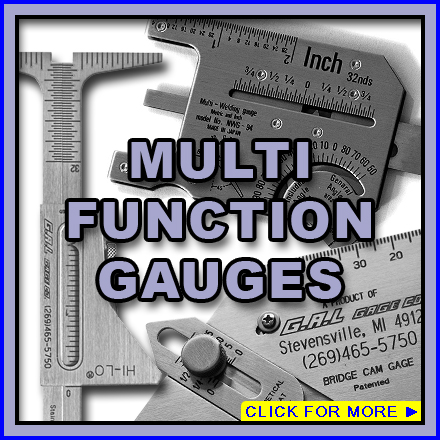Gauge Fillet Weld Explained: From Fundamentals to Advanced Techniques
Gauge Fillet Weld Explained: From Fundamentals to Advanced Techniques
Blog Article
Cutting-edge Techniques to Fillet Weld Evaluation and Testing: Enhancing Weld High Quality and Compliance Specifications
In the realm of welding, the quality and stability of fillet welds play a critical duty in guaranteeing the architectural stability and reliability of various commercial parts. With the consistent drive for boosted performance and conformity with rigorous requirements, the expedition of ingenious techniques to fillet weld examination and testing has actually become necessary. As industries develop, the typical approaches might no longer be adequate in satisfying the needs of modern-day welding applications (Gauge Fillet Weld). By embracing innovative modern technologies and methods, a brand-new horizon of possibilities arises in the realm of weld quality evaluation and adherence to conformity standards.
Advanced Non-Destructive Screening Techniques
Utilizing cutting edge innovations, progressed non-destructive testing methods play a critical role in guaranteeing the honesty and top quality of fillet welds. These methods, such as phased variety ultrasonic testing (PAUT) and magnetic fragment testing (MPT), offer detailed understandings into the weld's interior structure without triggering any type of damage to the product. PAUT, for example, makes use of numerous ultrasonic elements to inspect the weld from numerous angles, giving a comprehensive visualization of possible flaws like lack of fusion or splits.
Similarly, MPT is efficient in detecting surface-breaking problems by using a magnetic area and iron particles to the weld location. This approach is particularly beneficial for identifying interruptions that may jeopardize the weld's stamina. By employing these innovative non-destructive screening techniques, weld assessors can properly examine the quality of fillet welds, making certain conformity with industry requirements and policies. The capability to identify defects early not just improves weld high quality however also prevents expensive rework or failings in architectural stability, highlighting the importance of these innovative screening methods in welding examinations.
Robotics and Automation in Evaluation

The assimilation of robotics and automation has actually transformed the assessment procedure for fillet welds, boosting effectiveness and accuracy in quality evaluation. Robotics offer specific control and repeatability in evaluating welds, ensuring constant and trusted results. Automated systems can be configured to adhere to certain evaluation paths, guaranteeing extensive coverage of welds and minimizing the risk of human mistake.
Robotic inspection systems geared up with sophisticated sensors can detect and determine weld features with high accuracy, supplying thorough information for evaluation. These systems can recognize issues such as cracks, absence of blend, and porosity, enabling punctual corrective actions to be taken. Additionally, robotics and automation enable for real-time information collection and evaluation, offering prompt comments to drivers and helping with fast decision-making procedures.
Furthermore, making use of robotics and automation in fillet weld examination improves overall performance by decreasing assessment times and raising assessment throughput. By enhancing the examination procedure, manufacturers can make certain weld top quality and compliance requirements are satisfied effectively, inevitably resulting in cost savings and boosted item top quality.
Utilizing Expert System for Analysis
Man-made knowledge plays an essential role in enhancing the efficiency and precision of evaluation in fillet weld assessment processes. AI algorithms can quickly refine vast amounts of data from weld inspections, identifying problems or inconsistencies that might be testing to identify with the nude eye.
Moreover, AI systems can discover from past assessment data, continually enhancing their ability to recognize prospective problems and discrepancies in fillet welds. This flexible understanding capacity improves the total quality assurance procedure, decreasing the probability of human mistake and ensuring that welds satisfy the needed criteria. By integrating expert system right into fillet weld evaluation, industries can achieve higher levels of effectiveness, uniformity, and conformity in their evaluation methods.
Portable Tools for On-Site Evaluation
Enhancing area inspection performance, the adoption of mobile tools transforms on-site analysis procedures for fillet welds. These devices use versatility and ease, permitting assessors to perform comprehensive evaluations in numerous places, consisting of challenging or remote environments. Portable devices such More about the author as ultrasonic screening tools, magnetic bit evaluation devices, and digital radiography systems offer real-time data and high-resolution imaging capabilities, allowing fast decision-making and prompt comments on weld high quality.
One substantial advantage of mobile devices is their capacity to improve examination procedures, minimizing downtime and improving overall performance - Gauge Fillet Weld. Assessors can quickly deliver these devices to different work sites, eliminating the requirement for carrying heavy equipment or elements to off-site facilities. Additionally, the mobility of these devices advertises cost-effectiveness by reducing transport expenditures and increasing evaluation timelines
Furthermore, making use of mobile tools for on-site inspection advertises proactive top quality control steps, as assessors can quickly recognize and deal with any kind of prospective welding defects or disparities. By integrating these innovative modern technologies into on-site evaluation practices, welding specialists can ensure conformity with sector standards and boost weld quality, eventually leading to boosted structural stability and safety in various welding applications.
Assimilation of Information Monitoring Equipment

Having actually enhanced on-site examination processes via the application of mobile tools, the next stage includes the smooth assimilation of information management systems to further boost effectiveness and information evaluation abilities in fillet weld inspection and screening. By integrating data management systems into the examination process, organizations can simplify information collection, storage, and evaluation. This combination permits real-time surveillance of weld high quality, prompt identification of issues, and timely decision-making to fix any type of issues that might emerge during the inspection procedure.
Data administration systems play an important duty in streamlining examination data, facilitating simple accessibility for licensed workers, and making certain data stability and security. With the assimilation of these systems, inspectors can create thorough records, track historical data for pattern evaluation, and boost overall procedure performance. Furthermore, the combination of information administration systems allows smooth communication between various stakeholders associated with the assessment process, fostering cooperation and enhancing general quality assurance procedures. Ultimately, the assimilation of information administration systems offers to elevate the criteria of fillet weld evaluation and screening, making sure compliance with industry regulations and improving weld top quality.
Conclusion
In conclusion, innovative approaches to fillet weld evaluation and screening have actually substantially boosted weld quality and compliance requirements. Advanced non-destructive screening techniques, robotics, automation, expert system, mobile tools, and data management systems have transformed the way weld evaluations are performed. By using these technologies, markets can ensure that welds satisfy page the required high quality standards and guidelines, ultimately enhancing overall performance and safety in welding procedures.

Having actually optimized on-site inspection procedures via Related Site the use of portable devices, the following stage includes the smooth combination of data monitoring systems to additionally improve efficiency and information analysis capabilities in fillet weld inspection and screening. Eventually, the integration of information management systems offers to elevate the requirements of fillet weld evaluation and screening, making certain compliance with industry guidelines and enhancing weld quality.

Report this page